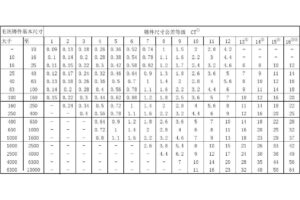Die casting tolerance
 Die casting is a highly popular and efficient manufacturing process utilized in various industries to produce intricate and precise metal parts. However, achieving precise and consistent dimensions in die casting can be quite a challenge due to some of its inherent variations in the process. In this article, we will discuss die casting tolerance, its significance, and how to optimize it for consistently high-quality castings.
Die casting is a highly popular and efficient manufacturing process utilized in various industries to produce intricate and precise metal parts. However, achieving precise and consistent dimensions in die casting can be quite a challenge due to some of its inherent variations in the process. In this article, we will discuss die casting tolerance, its significance, and how to optimize it for consistently high-quality castings.
Die casting tolerance is the degree of variability allowed in dimensions and characteristics of a die-cast part. In other words, it is the allowable difference between the maximum and minimum values of specific dimensions. For instance, if a component’s dimension is specified as 100 mm with a tolerance of ± 0.5 mm, acceptable ranges of dimensions lie between 99.5 mm and 100.5 mm.
Tolerance is a crucial aspect of die casting that determines the part’s accuracy, functionality, and cost. Tight tolerances are required for parts that need precise fitting or assembly, while looser tolerances are acceptable for parts that don’t require exact measurements. Inaccurate dimensions can affect the performance of the part leading to failure or reduced functionality.
To achieve the desired tolerances in die casting, it is essential to optimize the process parameters, including the die design, material selection, temperature, pressure, and speed. The die design should consider the shrinkage and thermal expansion of the material to avoid warping and cracking and ensure uniform dimensions.
The choice of material employed in the die casting process is another critical factor to consider as it impacts the characteristics of the alloy, such as its shrinkage rate, flowability, and heat absorption. Different alloys come with various shrinkage rates, while the material’s flowability affects the uniformity of the die cavity. Proper temperature control is also crucial to prevent shrinkage and provide consistent material flow.
Additionally, adjusting the die casting machine’s pressure and speed helps regulate the molten metal’s flow and decrease the likelihood of defects such as porosity, air entrapment, and flash. These defects have the potential to impact the part’s dimensions, leading to an increase in tolerance variation.
In conclusion, die casting tolerance plays a critical role in determining the part’s accuracy, functionality, and cost, making it a very important factor in the manufacturing process. Achieving tight tolerances requires process optimization that can be affected by different parameter adjustments such as the die design, material selection, temperature, pressure, and speed. Therefore, it is crucial to work with an experienced die casting manufacturer with the required expertise and technology to achieve high-quality, consistent castings. Such a manufacturer can help optimize the die casting process to achieve precise and uniform dimensions, giving an edge in this highly competitive industry.






